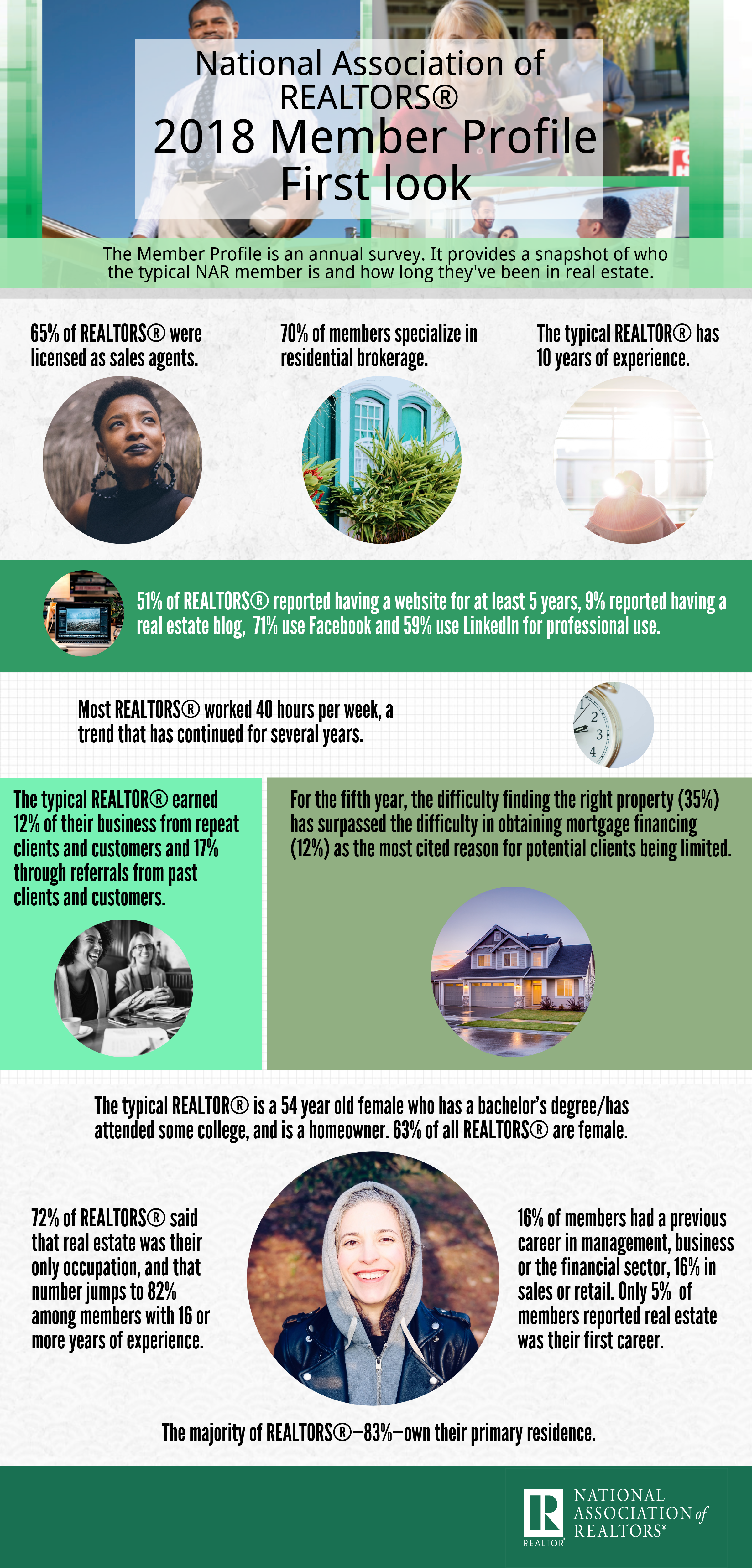The National Association of Realtors’ membership continues to grow, with the trade association adding more than 80,000 new realtors in the last 12 months.
The NAR’s membership now stands at 1.3 million as of April 2018, up from 1.22 million in March 2017, the association said, citing data from its 2018 Realtor’s Member profile.
Interestingly the NAR is also benefiting from an injection of youth, with more than 29 percent of its members having just two years of experience or less.
“While inventory shortages continue and home prices remain high, NAR has seen a whopping 6 percent increase in membership over the last year,” said Lawrence Yun, NAR’s chief economist. “Younger Americans are seeking business opportunities that working in real estate provides, but the overall trend is a slightly older age profile.”
The survey notes that the median age of a realtor is still on the grey side at 54 years-old, up one year from the age of 53 just two years ago. Another interesting stat – some 63 percent of realtors are female. The survey also found that most realtors don’t begin their careers in real estate, and only move into it at a later age, which might explain why most agents tend to be older. In fact, just five percent of agents began their careers in the profession, with most starting out in sectors such as business, finance, management, retail and sales before switching jobs.
But one negative aspect of greater realtor membership seems to be reduced transactions. Although it may probably have something to do with housing shortages as well, the bad news for realtors is the average number of transactions per year decreased from 12 in 2016 to 11 in 2017. The median brokerage sales volume also fell, from $1.9 million in 2016 to $1.8 million in 2017.

“A familiar story lingers from last year, as limited inventory continues to plague many housing markets across the country,” Yun said. “For the fifth year in a row, the difficulty finding the right property has surpassed the difficulty in obtaining a mortgage as the most cited reason limiting potential home buyers.”